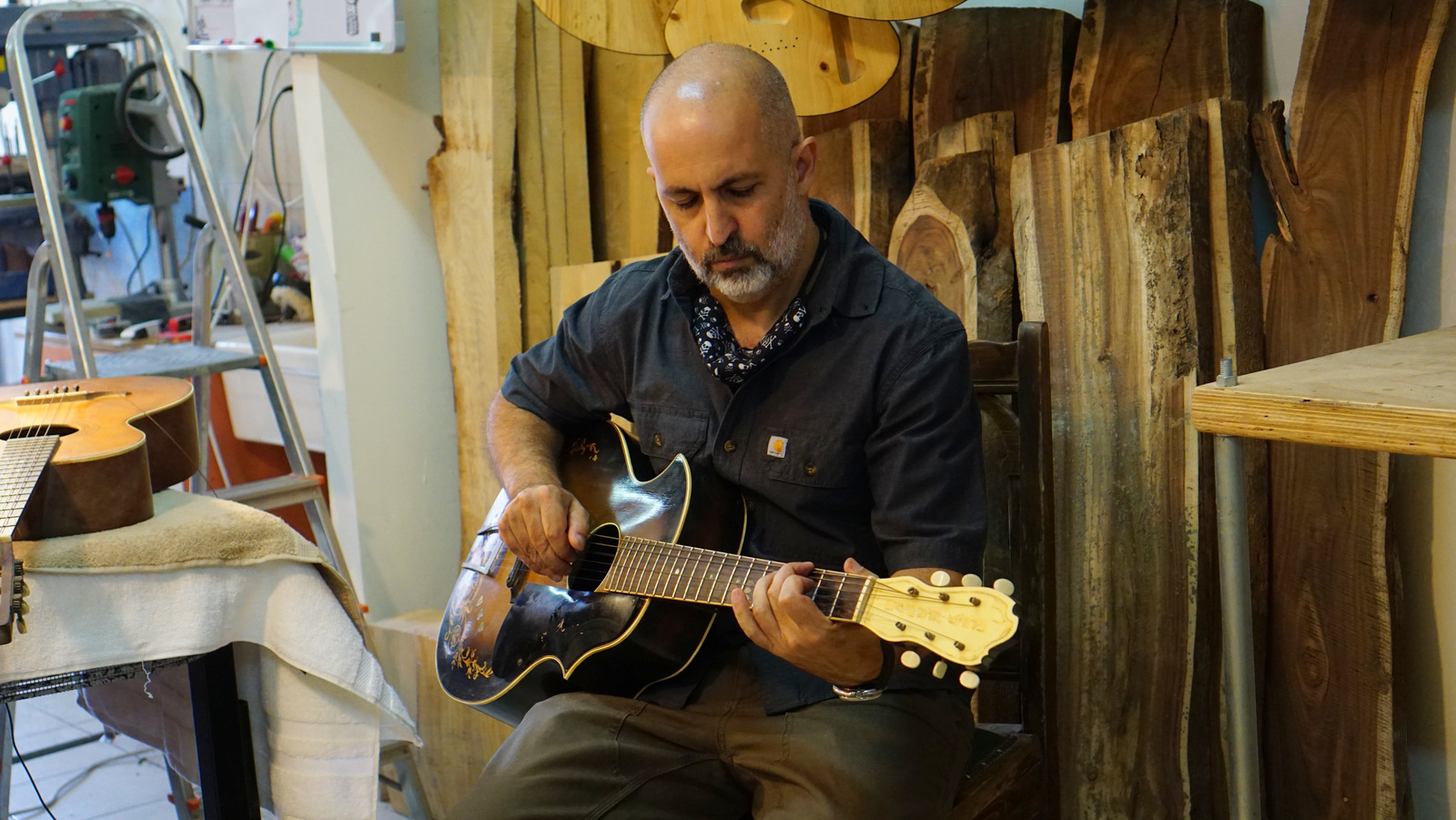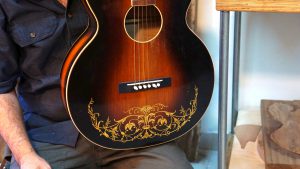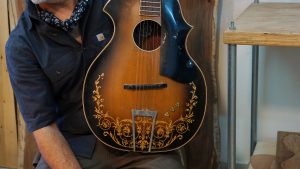
The design of the Thunder Child handmade guitar – Background
The Thunder Child and the Spirit of the Wind handmade guitars are super lightweight, small body electrics that were designed in the spirit of the small, lightweight parlor guitars of the early Delta Bluesmen and Women.
What do pre-war parlor guitars made by Kay, Regal, Harmony, Oscar Schmidt, Lyon and Healy have in common?
To answer these questions, I will dive into the historical origins of the Parlor Guitar.
Parlor guitars were small instruments; usually less than 12.5″ at the lower bout- (in the world of lutherie, “bout” refers to the measurement across the top of the guitar at the upper and lower parts of the body so the lower bout is the largest part of the guitar that is nearest to the string end at the bridge.
Parlor guitar, as the name indicates, derived from the use of these instruments in small venues such as home parlors during the late 19 century until the early 1900s before the invention of the gramophone.
That is why the different sizes of these instruments got various names such as Parlor size, concert size, and auditorium size.
These instruments were lightweight and small and became the weapon of choice for many blues and folk players.
The small original Oscar Shmidt “Stella” guitars that were made in Chicago were common among these musicians due to their small size, throaty tone, and lightweight.
Design-wise, these instruments were made to look like European instruments, or borrowed concepts from other instruments
(the Gibson Style-0 with it’s mandolin style scroll and silhouette-I’ve added a hint to this quirky design by adding the upper “Scroll” to the Thunder Child guitar and the mandolin style lower cutaway).
This guitar, by the way, was used by the famous Bluesman Big Bill Broonzy.
In the late 19th /early 20th century, commodities from Europe were considered high quality, and guitars were no different. Guitars of that era were adorned with classic European style decorations; floral patterns, decals with cherubs, harps, pastoral scenes, gold leaves, ancient Roman and Greek motifs, and so on.
This trend even leads to the “creation” of an Italian luthier…
Meet the mysterious Guitar Luthier A. Galiano!
Some guitar manufacturers went to the extent of creating fictional Europen luthiers such as the mysterious, or shall I say, the fictional character of Mr. A. Galiano.
The A. Galiano line of guitars was a sub-brand of the Oscar Schmidt line of guitars.
Since Italian instruments were considered as the crème de la crème (well, think about the legendary 18th-century Italian luthier Antonio Stradivari or Guarneri-a family of distinguished luthiers from Cremona in Italy in the 17th and 18th centuries, and you’ll get the picture), Oscar Schmidt decided to create the A.Galiano line of acoustic guitars. Many of the “A. Galiano” guitars were made in the Oscar Schmidt factory – which also made identical “Stella” labeled models. Some were made in the Chicago factories of Harmony, Kay, and Regal in order to keep up with the demand. However, some of them were made by independent New York Italian American luthiers such as Antonio Cerrito, Raphael Ciani, and Joseph Nettuno.


Many of these “Renaissance” influences ended up in many of the most famous fifties guitars-The violin silhouette headstock of the Fender Stratocaster, which was “borrowed” from the famous Paul Bigsby-Merle Travis guitar
or the Danelectro Longhorn, which was actually designed after a Lyra style 19th-century guitar.


